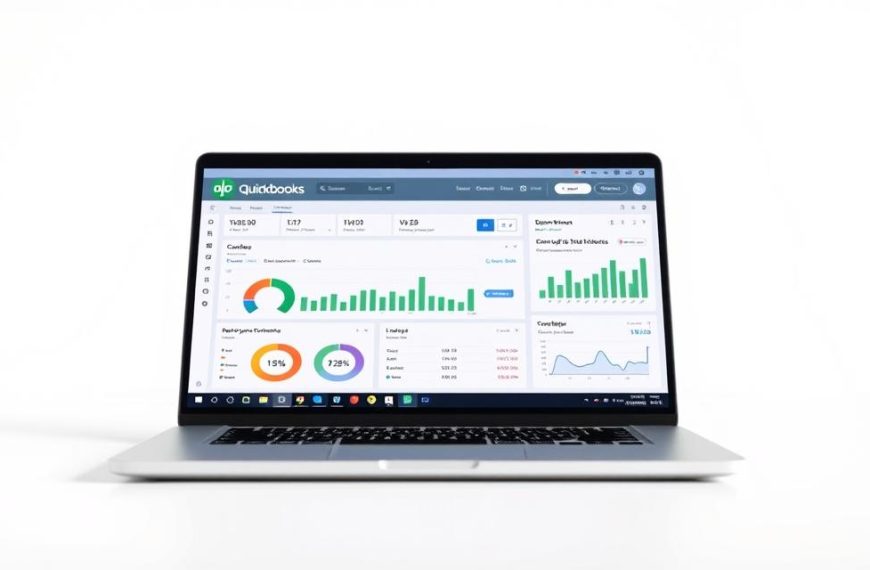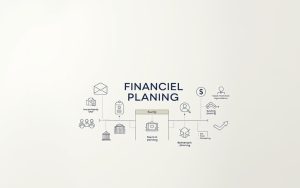Effective retirement planning requires a comprehensive understanding of your financial situation and goals. A thorough financial analysis provides a clear roadmap for your financial future, ensuring you can maintain your desired lifestyle after leaving the workforce.
The process involves several key steps: evaluating your current financial position, establishing clear retirement goals, analysing potential income sources, estimating future expenses, and creating sustainable withdrawal strategies. By following these essential steps, you can build a robust retirement strategy that adapts to changing circumstances and helps secure your financial independence.
A well-structured retirement planning approach also addresses potential risks such as inflation, market volatility, and healthcare costs that could impact your retirement security.
Understanding Your Current Financial Position
The journey to a financially secure retirement begins with a comprehensive assessment of your current financial position. This involves a detailed examination of your financial health to identify areas of strength and weakness.
Assessing Your Assets and Liabilities
To understand your financial standing, you need to assess your assets and liabilities. Your assets include savings accounts, retirement accounts, real estate, and other investments. On the other hand, your liabilities comprise mortgages, loans, and credit card debts. By comparing your assets and liabilities, you can determine your net worth, a crucial indicator of your financial health.
Analysing Income Streams and Expenses
Analysing your income streams and expenses is equally important. This involves documenting all sources of revenue, including employment income, side businesses, and passive income. You should also categorise your expenses into fixed expenses, such as mortgage/rent and utilities, and discretionary spending, like entertainment and travel. Understanding your income-to-expense ratio helps you determine your current savings capacity and whether adjustments are needed to meet your retirement savings goals.
- Documenting all sources of revenue to understand your total income.
- Categorising expenses to identify areas for potential savings.
- Understanding your income-to-expense ratio to assess your savings capacity.
By conducting this analysis, you can gain a clear picture of your financial situation and make informed decisions to enhance your retirement planning.
Establishing Clear Retirement Goals
Establishing clear retirement goals is a crucial step in creating a comprehensive retirement plan that aligns with your financial capabilities and aspirations. We all envision a different picture of what a happy and fulfilling retirement looks like, and navigating this path begins with a solid financial planning strategy.
Defining Your Retirement Lifestyle
Defining your retirement lifestyle is about envisioning how you want to live during your retirement years. This involves considering various aspects such as travel, hobbies, living arrangements, and spending habits. Your retirement lifestyle will significantly influence your financial planning.
For instance, if you plan to travel extensively, you’ll need to budget accordingly for travel expenses. Similarly, if you wish to pursue hobbies or other leisure activities, you’ll need to factor these into your retirement budget.
Setting Realistic Financial Targets
Setting realistic financial targets for retirement involves translating your lifestyle goals into specific monetary requirements. These targets should account for basic necessities, healthcare costs, leisure activities, and an emergency fund. To set realistic targets, consider your current age, planned retirement age, life expectancy, and the number of years you’ll need to fund in retirement.
| Category | Estimated Annual Expenses | Total Retirement Savings Needed |
|---|---|---|
| Basic Necessities | $20,000 | $400,000 |
| Healthcare Costs | $5,000 | $100,000 |
| Leisure Activities | $10,000 | $200,000 |
| Emergency Fund | $2,000 | $40,000 |
| Total | $37,000 | $740,000 |
Working with a financial planner can help ensure your retirement goals and financial targets are aligned with your current financial position and future possibilities, creating a roadmap that bridges the gap between your present circumstances and retirement aspirations.

When Conducting a Financial Analysis for Retirement Planning
A financial analysis for retirement planning involves assessing various factors that impact your post-retirement life. When you retire, your expenditure patterns are likely to change, with some expenses decreasing and others increasing.

Essential Components of a Retirement Financial Analysis
When conducting a financial analysis for retirement planning, it is crucial to review the factors that contribute to achieving your desired retirement lifestyle. This includes assessing your current financial position, estimating future expenses, and identifying potential income sources.
The essential components of a retirement financial analysis comprise evaluating your assets and liabilities, analysing income streams and expenses, and setting realistic financial targets.
Tools and Resources for Effective Analysis
Various tools and resources can enhance the effectiveness of your retirement financial analysis. These include:
- Retirement calculators that help estimate how much you need to save based on your current age, retirement age, expected lifespan, and desired retirement income.
- Financial planning software that models different scenarios, showing how changes in savings rates, investment returns, retirement age, or spending habits might affect your retirement outcomes.
- Professional resources, such as certified financial planners, who specialise in retirement planning and can provide personalised guidance.
- Government and educational resources that offer valuable information about retirement planning strategies, tax considerations, and Social Security optimisation techniques.
Estimating Future Retirement Expenses
A key aspect of retirement planning involves forecasting expenses to ensure financial stability. This process requires a detailed examination of various expense categories to create a comprehensive financial plan.
Housing and Daily Living Costs
Housing costs, including rent or mortgage payments, property taxes, and maintenance, form a significant portion of retirement expenses. Daily living costs, such as food, transportation, and utilities, also need to be considered. It’s essential to account for potential changes in these expenses during retirement.
| Expense Category | Pre-Retirement | Post-Retirement |
|---|---|---|
| Housing | Mortgage Payments | Rent/Property Taxes |
| Daily Living | Commuting Costs | Local Travel |
Healthcare and Insurance Expenses
Healthcare expenses are a critical consideration in retirement planning. Costs include medical insurance premiums, out-of-patient expenses, and potential long-term care costs. It’s crucial to factor in inflation when estimating these expenses.
Insurance expenses, including health, dental, and vision coverage, should also be accounted for. Many retirees rely on Medicare, but supplemental insurance may be necessary.
Leisure and Lifestyle Considerations
Leisure activities and lifestyle choices significantly impact retirement expenses. Travel, hobbies, and social engagements are just a few areas where costs can vary greatly. It’s essential to balance enjoying retirement with financial prudence.
- Consider both regular leisure activities and occasional splurges.
- Family-related expenses, such as gifts or educational support, should be factored into your plans.
By carefully estimating future retirement expenses, individuals can create a more accurate financial plan, ensuring a more secure and enjoyable retirement.
Analysing Potential Retirement Income Sources
A thorough analysis of potential retirement income sources is essential for effective retirement planning. Understanding where your income will come from during retirement is crucial for ensuring financial stability.

Social Security Benefits and Pensions
Social Security benefits often form the backbone of retirement income, providing a foundational level of financial support. The amount received can vary significantly based on work history and the age at which benefits are claimed. Pensions, though less common, can also provide a predictable income stream, supplementing Social Security benefits.
Retirement Accounts and Investments
Retirement accounts, such as 401(k)s and IRAs, are typically built up over decades of saving and investment. The value of these accounts at retirement depends on contributions made and the performance of investments within them. A well-diversified investment portfolio can help ensure that retirement savings keep pace with inflation and market fluctuations.
Alternative Income Streams
Diversifying income sources in retirement can enhance financial security. Alternative streams can include rental property income, annuities, royalties, business interests, or part-time employment. For instance, annuities can offer guaranteed income, while part-time work can provide both income and a sense of purpose. Rental properties can generate regular income but require management and maintenance. Diversifying across multiple sources creates resilience in a retirement plan, mitigating risks associated with any single income stream.
Creating a Sustainable Withdrawal Strategy
A sustainable withdrawal strategy is the cornerstone of successful retirement planning, enabling you to make the most of your savings. This involves determining how much you can safely withdraw from your retirement accounts annually without depleting your funds prematurely.
Understanding Safe Withdrawal Rates
Safe withdrawal rates are a critical component of a sustainable withdrawal strategy. Historically, a withdrawal rate of 4% has been considered a benchmark for retirees, though this can vary based on individual circumstances, market conditions, and life expectancy. It’s essential to assess your personal financial situation, investment portfolio, and retirement goals to determine a safe withdrawal rate that works for you.
Tax-Efficient Distribution Planning
Tax-efficient distribution planning can significantly enhance the longevity of your retirement savings. This involves understanding the tax implications of withdrawals from different types of accounts, such as traditional retirement accounts, Roth accounts, and taxable investment accounts. By coordinating withdrawals across these accounts, you can manage your tax bracket and minimise tax liabilities. For instance, drawing from tax-free sources during high-income years and from tax-deferred accounts in lower-income years can be an effective strategy.
- Coordinating withdrawals across different account types to manage your tax bracket.
- Factoring in Required Minimum Distributions (RMDs) from traditional retirement accounts, which can impact your tax situation.
- Utilising advanced tax strategies, such as Roth conversions and tax-loss harvesting, to enhance the tax efficiency of your distribution plan.
For more insights on making your retirement savings last, consider exploring resources like planning for a lifetime of retirement.
Addressing Financial Risks in Retirement
To secure your retirement, it’s crucial to identify and mitigate potential financial risks. Retirement planning involves a comprehensive approach to managing various risks that could impact your financial stability.
Inflation and Market Volatility
Navigating the challenges of inflation and market volatility requires a strategic approach to safeguard your retirement funds. Inflation gradually erodes purchasing power, meaning that the money you save today will likely buy less in the future. Consequently, when planning for retirement, you must incorporate realistic inflation projections into your expense forecasts.

Longevity and Healthcare Cost Risks
Longevity risk—the possibility of outliving your savings—has increased as life expectancies have extended, with many retirees now needing to plan for 30+ years of retirement. Strategies to address longevity risk include delaying Social Security benefits, considering longevity annuities, and maintaining some growth-oriented investments.
| Risk | Strategies to Mitigate |
|---|---|
| Longevity Risk | Delay Social Security benefits, consider longevity annuities, maintain growth-oriented investments |
| Healthcare Cost Risks | Maintain adequate insurance coverage, consider long-term care insurance, establish dedicated healthcare savings |
A comprehensive approach to managing healthcare cost risks includes maintaining adequate insurance coverage and considering long-term care insurance or hybrid policies.
Conclusion
Effective retirement planning requires a comprehensive financial analysis to ensure a secure future. This involves several key steps: understanding your current financial position and establishing clear retirement goals.
- Conducting a thorough financial analysis for retirement planning is essential for a secure retirement.
- By taking comprehensive steps in your plan, you can make sure you’re well-positioned for the lifestyle you’ve envisioned while maintaining financial peace of mind.










